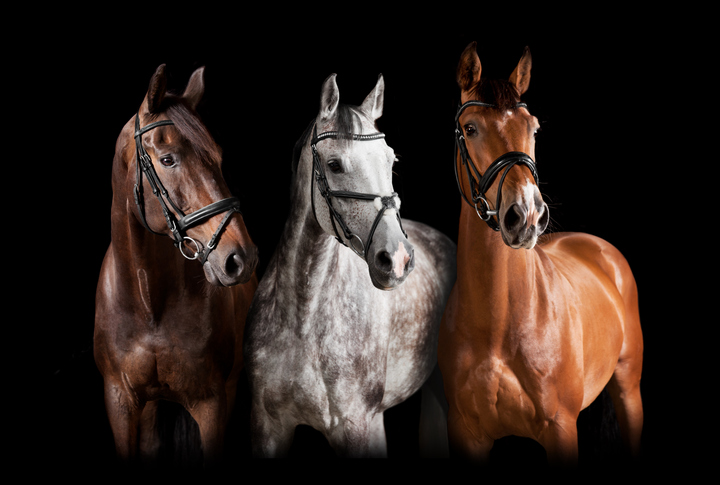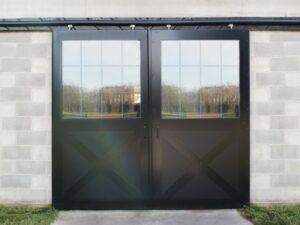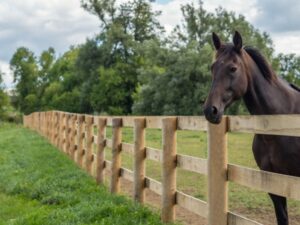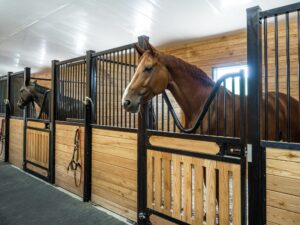Imagine riding your horse with precision and grace, feeling a perfect connection as you effortlessly guide them through each movement.
The key to achieving this level of performance? A well-fitted horse bridle.
Whether you’re a competitive rider or simply enjoy leisurely rides, the right bridle can make all the difference in your horse’s comfort and performance.
Join us as we delve into the importance of a well-fitted bridle and how it can enhance your riding experience.
The Importance of a Well-Fitted Horse Bridle
When it comes to achieving optimal performance, the role of a horse bridle cannot be overstated.
A well-fitted bridle plays a vital role in facilitating communication between the rider and the horse, ensuring precise cues and quick responses.
Here’s why a proper fit is crucial for both the horse and rider:
Comfort:
Just like a shoe that doesn’t fit quite right can cause discomfort, an ill-fitted bridle can lead to irritation, pain, and even stress for the horse.
A properly fitted bridle ensures that the sensitive areas of the horse’s head, such as the poll, nose, and mouth, remain free from unnecessary pressure points and rubbing.
Communication:
Effective communication between horse and rider is the foundation of good horsemanship.
A properly fitted bridle promotes clear and efficient communication by providing a secure connection between the rider and the horse’s responses.
Optimal performance requires precise, nuanced cues, and a well-fitted bridle allows for just that.
Performance:
The fit of your horse’s bridle directly influences his or her movements and ability to perform at its best.
An ill-fitted bridle may restrict their range of motion or cause them discomfort, resulting in reduced performance and potential resistance.
A well-fitted bridle, on the other hand, allows your horse to move freely and comfortably, enhancing their overall performance.
Now that we understand the importance of a well-fitted horse bridle for performance, let’s explore the various components of a bridle and how each contributes to achieving a proper fit.
The Anatomy of a Horse Bridle
When it comes to understanding the importance of a well-fitted horse bridle, it’s crucial to have a grasp of its key components and their functions. Let’s take a closer look at the anatomy of a horse bridle:
1. Headstall or Crownpiece
The headstall, also known as the crownpiece, is the part of the bridle that goes over the horse’s head behind the ears.
It plays a critical role in providing stability and ensuring proper fit.
The headstall should be adjustable to accommodate different horse sizes and should not pinch or put excessive pressure on the horse’s head.
2. Browband
The browband is the strap that goes across the horse’s forehead, sitting just below the base of the ears.
Its primary function is to keep the headstall in the correct position and prevent it from sliding down or slipping.
The browband should be fitted snugly but not too tight, ensuring that it comfortably holds the bridle in place without interfering with the horse’s movement or causing discomfort.
3. Bit and Reins
The bit and reins are arguably the most important components of the bridle. The bit sits in the horse’s mouth and is used for communicating cues from the rider to the horse.
Meanwhile, the reins allow the rider to control the direction, speed, and movements of the horse.
There are various types of bits available, each one fitting in with either Western tack or English tack.
Each bit has a specific function and application, depending on the horse’s needs and the rider’s discipline.
4. Throatlatch
The throatlatch is a strap that fastens beneath the horse’s jaw, preventing the bridle from being pulled off or slipping over the ears.
It plays a vital role in maintaining the stability and positioning of the bridle.
The throatlatch should be adjusted to provide a secure fit without constricting the horse’s movement or causing discomfort.
5. Noseband
The noseband is an optional strap that encircles the horse’s nose, just below the cheekbones.
While it may not always be necessary, a noseband can help with additional control and communication.
Some common types of nosebands include cavesons, figure-8 nosebands, and flash nosebands, each with its own purpose and effect on the horse’s performance.
6. Cheekpieces
Cheekpieces are short straps that connect the headstall to the bit at either side of the horse’s head.
They keep the bit in place and play a crucial role in maintaining proper fit and communication between the rider and the horse.
With a better understanding of the various components of a horse bridle, you can make informed decisions when choosing the right bridle for your horse.
The type and design you select will depend on various factors, such as discipline, your horse’s individual needs, and the level of control and comfort you’re aiming for.
Measuring for Proper Fit
To ensure you choose the right bridle size, follow these step-by-step instructions to measure your horse accurately:
1. Measure the Length:
Start by measuring the distance from the corner of your horse’s mouth to the back of the ears.
This will give you the appropriate length needed for the cheekpieces and headstall. Remember to perform this measurement with the horse’s mouth closed.
2. Measure the Width:
In order for the bit to fit comfortably in the horse’s mouth, you need to measure the width needed.
This can be done by using a flexible measuring tape or a piece of string.
Place the tape or string across the width of the horse’s mouth, just above the corners of the lips, and take note of the measurement.
3. Assess Pressure Distribution:
A well-fitted bridle should evenly distribute pressure across the head and facial structure.
Make sure to check that the noseband, browband, and throatlatch provide a snug but comfortable fit without putting excessive pressure on sensitive areas.
4. Snugness and Comfort:
While it’s important for the bridle to fit securely, you also want to ensure it doesn’t pinch, rub, or cause discomfort.
Pay attention to any signs of protests during the fitting process, such as head shaking or resistance to the bridle.
Adjustments may be necessary to achieve the optimum fit for your horse’s unique anatomy.
By carefully taking these measurements and considering other aspects such as pressure distribution and comfort, you can confidently select a bridle that fits your horse correctly and meets their individual needs.
Don’t forget to consult with equine professionals for guidance if needed, as they can provide valuable insights based on their expertise and experience.
Selecting the Right Material and Design
When it comes to selecting the right horse bridle, considering the material and design is crucial for both the comfort of your horse and the effectiveness of your communication.
Different materials offer varying levels of durability, flexibility, and softness, while a well-designed bridle can accommodate your horse’s unique facial structure and sensitivity.
Here are some important factors to consider when choosing the material and design of your horse bridle:
- Leather: Leather is a popular choice for bridles due to its durability, comfort, and classic appearance. It is known for its ability to conform to the horse’s head shape over time and provide a good grip for the rider. However, leather bridles may require some breaking-in and regular oiling to maintain their quality.
- Synthetic Materials: Synthetic bridles, made from materials such as nylon, have gained popularity in recent years. These bridles are often lightweight, easy to clean, and resistant to mold and mildew. They may be a suitable option if you prefer low-maintenance equipment or live in a humid environment where leather is prone to damage.
When it comes to the design of the bridle, it’s essential to consider your horse’s facial anatomy and sensitivities.
Different horses may have varying head shapes, such as wide-set eyes or a sensitive poll.
Choosing a bridle that fits your horse’s specific needs can greatly enhance their comfort and overall performance. Some design features to keep in mind include:
- Padded Bridles: Bridles with padding on the noseband, browband, and headpiece offer additional comfort for your horse, especially if they have a more sensitive face or are prone to rubbing. The padding helps distribute pressure more evenly and reduces the risk of discomfort or friction.
- Ergonomic Designs: Look for bridles with anatomically shaped nosebands and headpieces that follow the natural contours of your horse’s head. These designs minimize pressure points and ensure a better fit and improved communication between you and your horse.
When selecting a bridle, it’s essential to assess your horse’s individual needs and consider their discipline or riding style.
Different disciplines may require specific components or styles of bridles. Investing in the right material and design for your horse’s bridle can greatly contribute to their comfort, performance, and overall well-being.
Shop Horse Bridles in Rockwood, Ontario
System Equine is dedicated to providing quality bridles, and equestrian equipment to riders across Ontario.
Whether it’s during a visit to our Rockwood location, or directly from our online shop to your front door, you’ll find everything you need.
We invite you to explore our extensive range of bridles and experience the difference firsthand.
Trust System Equine to provide you with top-quality equestrian products and solutions, backed by our years of experience and commitment to our core values.
Contact us today or visit our Rockwood, Ontario location to see our complete collection and benefit from our exceptional customer service.
